Ever marveled at the deep hue of mahogany furniture? Is mahogany truly a hardwood? Dive in to unravel the mystery!
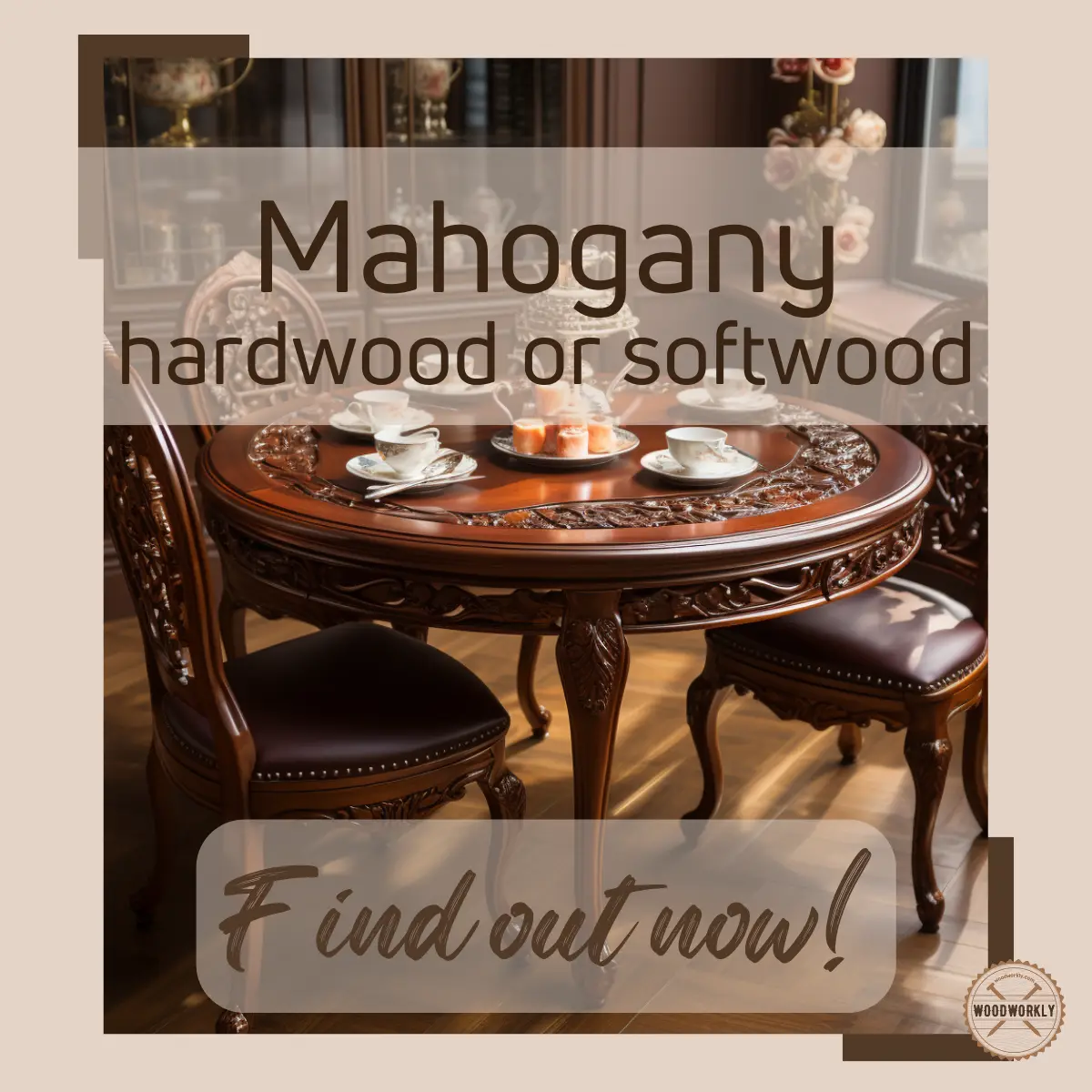
Mahogany is known as one of the strongest woods on the planet which is used for so many different woodworking projects.
But most people wonder whether Mahogany is softwood or hardwood when it comes to large construction projects.
I did some research and let’s figure out, Is Mahogany a hardwood?
Yes, Mahogany is a hardwood with excellent durability and strength. Mahogany has a Janka hardness rating of 800 lbf (3,558 N) which is significantly harder than most woods. Mahogany comes from an evergreen hardwood tree. It can use for both indoor and outdoor projects because being so hard, dense, and strong.
But there’s a lot more to know about the hardness of Mahogany.

In this article, I”ll deeply explore whether is Mahogany a hardwood, how hard is Mahogany with its characteristic features, and its pros and cons as well.
Furthermore, I’ll answer some frequently asked questions as well.
Let’s dig in!
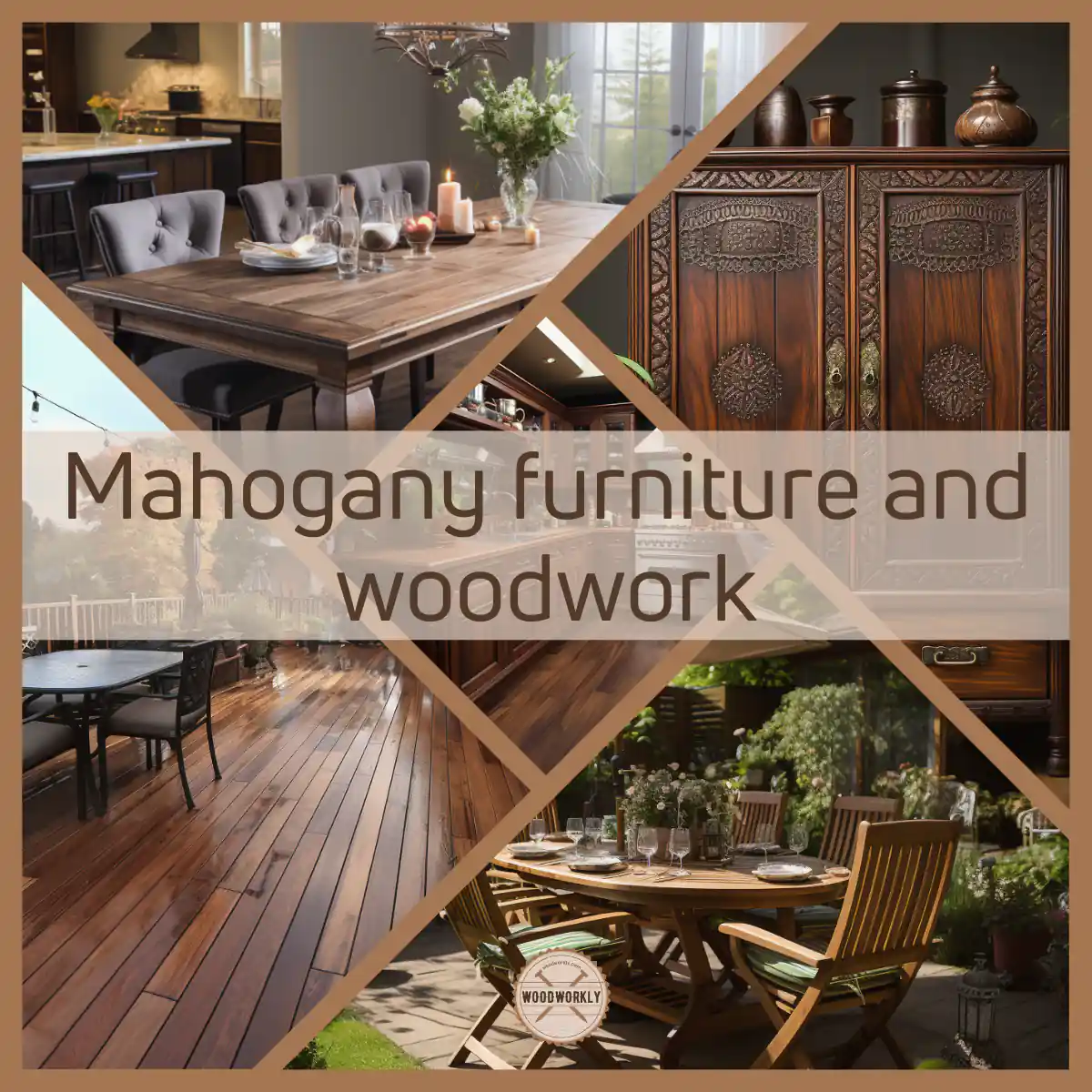
First of all let’s get a brief knowledge about Mahogany wood.
What is Mahogany Wood?
Mahogany, an evocative name often linked with sophistication and elegance, isn’t just a type of wood—it’s a legacy.
Diving into the history of furniture, architecture, and even musical instruments, mahogany has secured its place as one of the most coveted woods in the world.
But what makes it so special? Let’s embark on a journey to discover the allure and mysteries of mahogany wood.
Originating from the heart of Central and South America, mahogany has been celebrated for its exceptional characteristics for centuries.
If you’ve ever been around antique furniture, chances are you’ve come across mahogany, even if you weren’t aware of it. Why?
Because of its durability and workability. Mahogany sports a beautiful pink or reddish-brown hue that gracefully deepens over time.
This chameleon-like quality of changing shades gives it an ever-evolving beauty.
Picture this: I once had a chance to visit an old colonial home with furniture that had been passed down through generations.
The mahogany table at the center, although old, had a deep reddish-brown hue that spoke of decades of family gatherings and stories.
That’s the magic of mahogany—it matures like a fine wine.
Grain and Texture
Another striking feature is its grain. Have you ever noticed the patterns on wood furniture? That’s the grain.
Mahogany wood boasts a straight and uniform grain. It’s typically devoid of knots or blemishes, giving it a smooth and pristine look.
This quality doesn’t just make it beautiful to behold, but also a delight to work with for craftsmen.
For instance, in my woodworking class, while many struggled with knotty woods, the mahogany piece was like sculpting through butter—smooth and effortless.
Varieties and Confusions
Now, here’s a fun fact. Not all that glitters is gold, and not everything labeled “mahogany” is genuine mahogany.
Genuine mahogany belongs to the genus Swietenia, which includes three main types of trees:
- Swietenia macrophylla – Known by many names like Honduran mahogany or big-leaf mahogany.
- Swietenia humilis – Often called Mexican mahogany or Pacific Coast mahogany.
- Swietenia mahogani – The Cuban mahogany or American mahogany.
The overlapping names can indeed be a tad confusing!
A friend once bought what he believed was a genuine mahogany desk, only to discover it was a different species entirely.
It’s essential to understand the subtle distinctions.
Now let’s head back to our key area, the hardness of Mahogany.
How Hard Is Mahogany?
Mahogany is considered a hardwood. It is significantly harder, denser, and stronger than almost all the softwoods and most of the hardwoods as well.
Because of having strong tight grain structure, Mahogany wood has diffused porous structure like most other hardwoods.
Because of having small diameter diffuse porous structure, Mahogany wood does not have lots of space inside its fiber vessels.
Therefore, it doesn’t absorb or release moisture that much, and expansions and contractions are so little upon humidity or temperature variations of the environment.
Because of having high fiber density over the little volume of wood with fewer spaces, Mahogany is extremely dense and that’s the main reason for its high hardness.
According to the Janka hardness rating Mahogany has a Janka hardness rating of 800 lbf (3,558 N) which is significantly harder than Basswood, Aspen, Poplar, Cedar, and Pine.
Janka hardness test is the standard method of measuring the hardness of a particular wood against wear and shear.
If a particular wood has high resistance against wear and tear, that means its Janka hardness test value is high.
Even though Mahogany is so dense and hard, it is easy to work with both woodworking hand tools and power tools.
Mahogany can be used for both interior and exterior woodworking projects and it can tolerate harsh weather conditions.
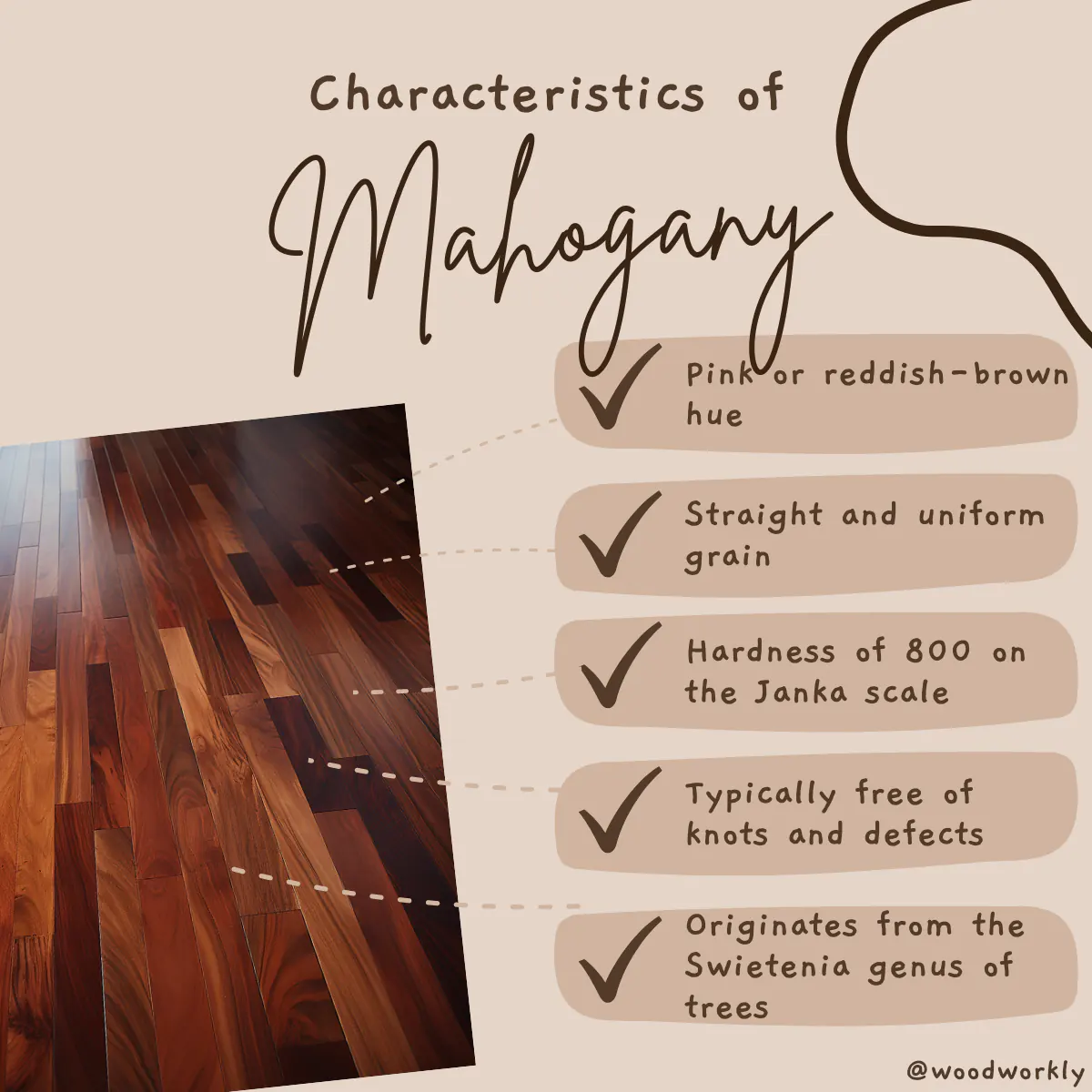
Hardness of Mahogany Compared to Other Woods
According to the Janka hardness test Mahogany has a hardness rating of 800 lbf (3,558 N) and let’s see how hard Mahogany is compared to other popular wood types.
| Wood species | Hardness value |
| Brazilian Walnut | 3,684 lbf (16,390 N) |
| Red Mahogany, Turpentine | 2,697 lbf (12,000 N) |
| Brazilian Cherry, Jatoba | 2,350 lbf (10,500 N) |
| Golden Teak | 2,330 lbf (10,400 N) |
| Hickory, Pecan, Satinwood | 1,820 lbf (8,100 N) |
| Hard Maple, Sugar Maple | 1,450 lbf (6,400 N) |
| White Oak | 1,360 lbf (6,000 N) |
| Ash (White) | 1,320 lbf (5,900 N) |
| American Beech | 1,300 lbf (5,800 N) |
| Red Oak (Northern) | 1,290 lbf (5,700 N) |
| Yellow Birch / Baltic Birch | 1,260 lbf (5,600 N) |
| Teak | 1,155 lbf (5,140 N) |
| Black Walnut, North American Walnut | 1,010 lbf (4,500 N) |
| Cherry | 995 lbf (4,430 N) |
| Black Cherry, Imbuia | 950 lbf (4,200 N) |
| Red Maple | 950 lbf (4,200 N) |
| Mahogany | 800 lbf (3,558 N) |
| Douglas Fir | 710 lbf (3,158 N) |
| Silver Maple | 700 lbf (3,100 N) |
| Alder | 590 lbf (2,624 N) |
| Hemlock | 540 lbf (2,402 N) |
| Black Spruce | 520 lbf (2,313 N) |
| Sitka Spruce | 510 lbf (2,268 N) |
| Cypress | 510 lbf (2,268 N) |
| White Spruce | 480 lbf (2,135 N) |
| Redwood | 420 lbf (1,868 N) |
| Engelmann Spruce | 390 lbf (1,735 N) |
| Sugar Pine | 380 lbf (1,690 N) |
As you can see Mahogany is harder than most softwoods and some hardwoods as well.
It is a long-lasting hardwood that can be used pretty much for anything.
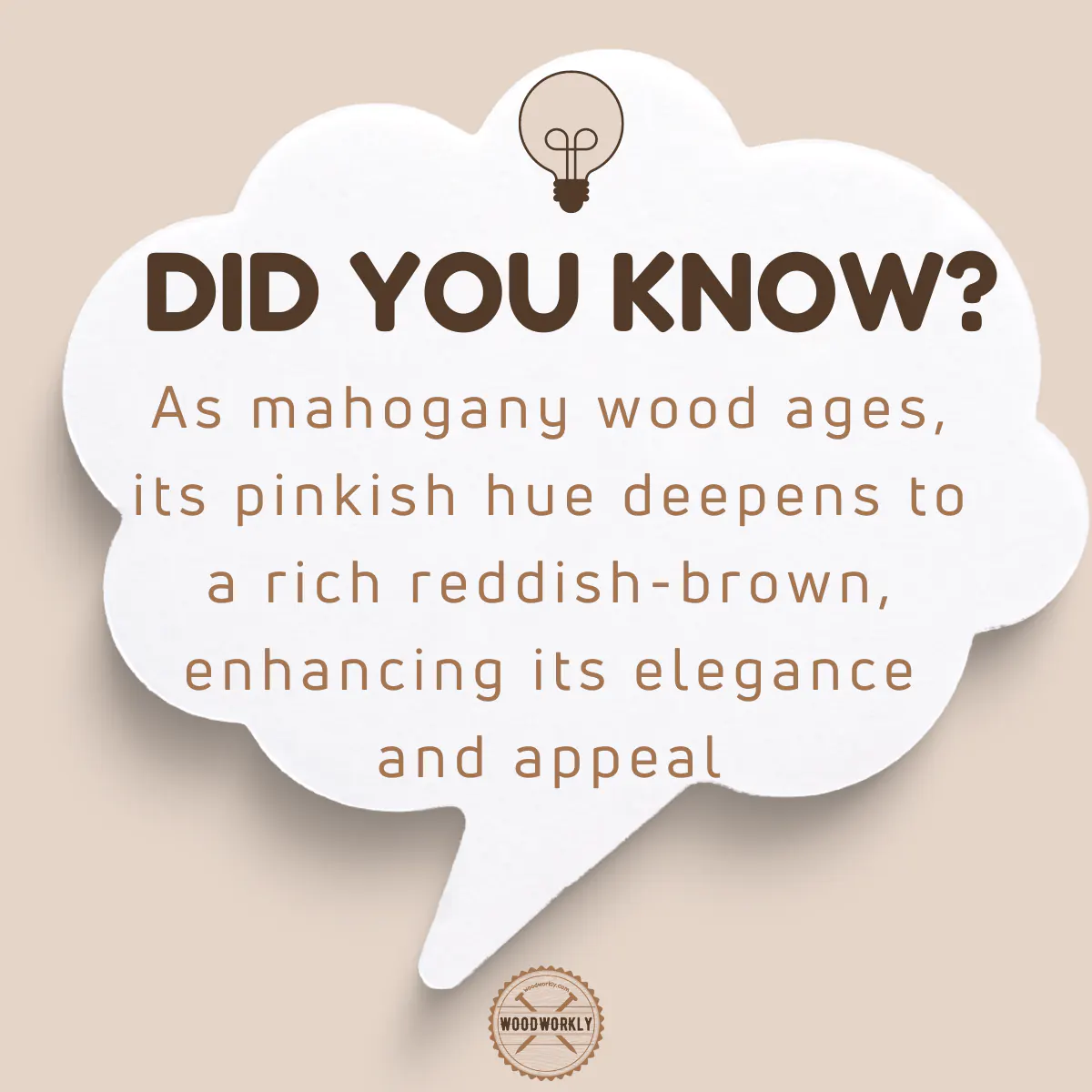
Mahogany Wood Characteristics
Mahogany is a darker reddish brown color hardwood with an extremely dense and strong fiber structure.
Because of being so hard, dense and attractive, Mahogany can use for both interior and exterior woodworking projects.
Most importantly depside being hard and dense, Mahogany has high workability.
Therefore, even a beginner in woodworking can use Mahogany since it cuts, screws, and nails more easily than many other hardwoods.
But your woodworking tools need to well sharpen before working with Mahogany to avoid chipping the wood.
Sanding and finishing Mahogany is easy. Mahogany wood can coat with varnish, stain, paint, or any other oil finish like tung oil, Danish oil, or teak oil. It holds finishes so well.
Mahogany comes from an evergreen tree and it has a straight, interlocked, wavy, or irregular grain pattern.
It has a uniform medium texture with a natural luster that adds unique attractiveness to the wood.
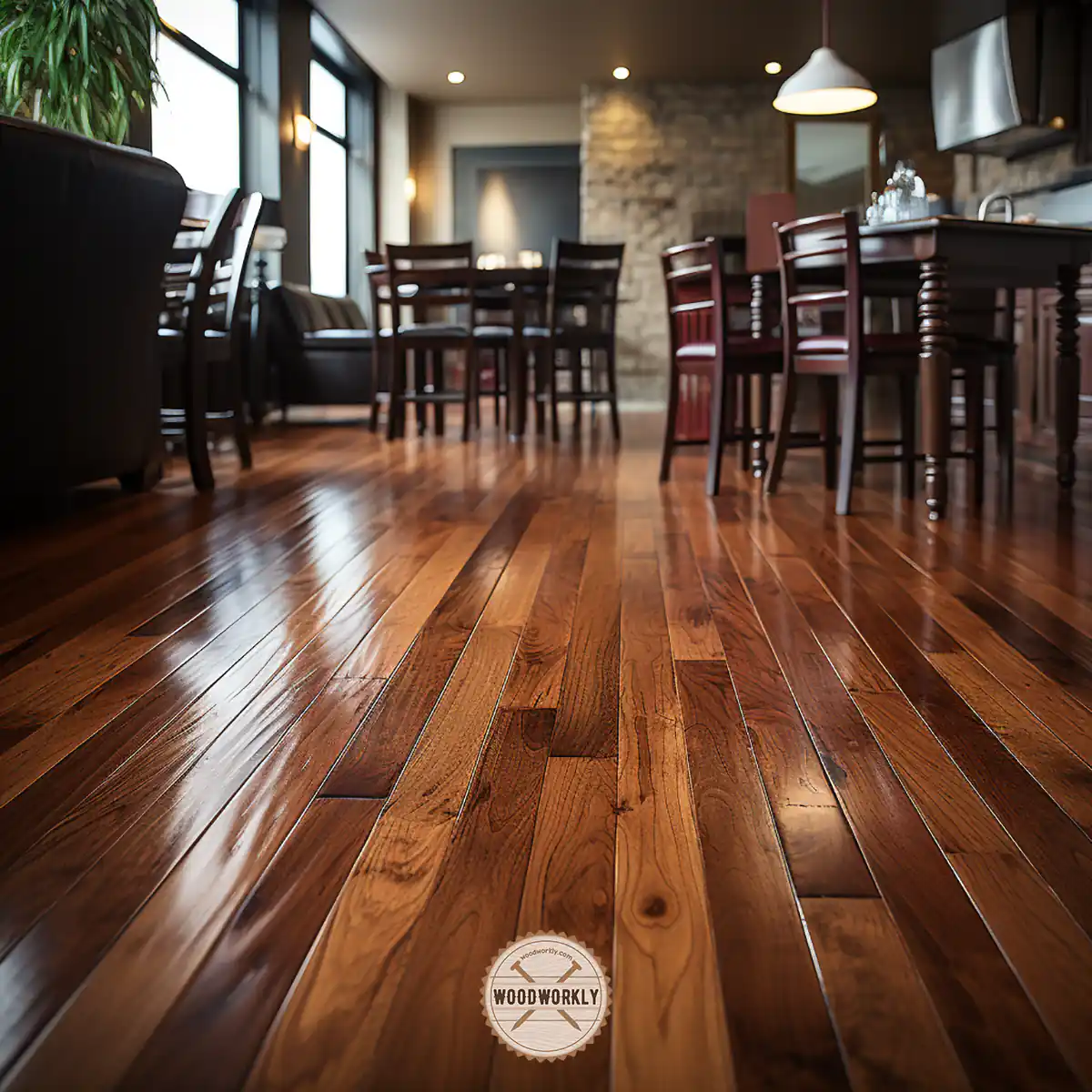
Mahogany wood has good resistance against water damage. It repels water and that helps the wood to get protected from rotting.
Having good water resistance is important for outdoor woodworking projects.
Because of having good resistance to moisture, Mahogany moves so little against extreme humid and temperature variations.
Water does not absorb or evaporate from the wood too much and therefore it can maintain excellent dimensional stability and prevent the wood from warping.
This prevents wood from cracking and peeling. It is a unique hardwood feature.
Did you know? Mahogany is one of the Best Wood for Axe Handle!
In summary, here’re some most significant qualities of Mahogany.
- Hardwood
- High workability
- No characteristic odor
- Long lasting wood
- Straight wood grain
- Water-resistant
- Less shrinkage
- Easy to finish
- Rot-resistant
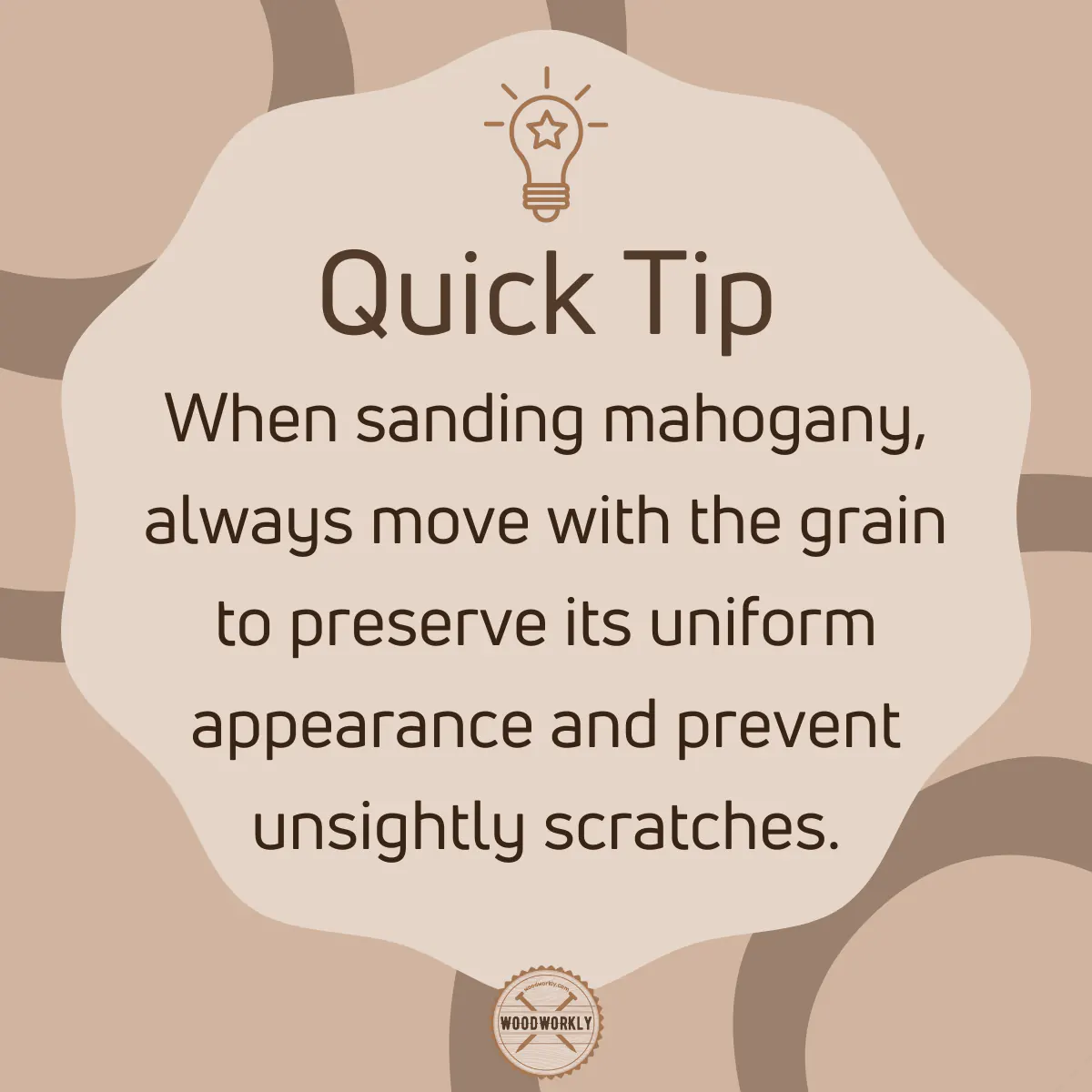
Properties of Mahogany
Here’re the main characteristic features of Mahogany wood,
| Color | Darker reddish brown |
| Density | 0.42 kg/m3 |
| Hardness | 800 lbf (3,558 N) |
| Stiffness | 1.50 Mpsi |
| Wood Type | Hardwood |
| Applications | Furniture, Decking, Doors, Panelling |
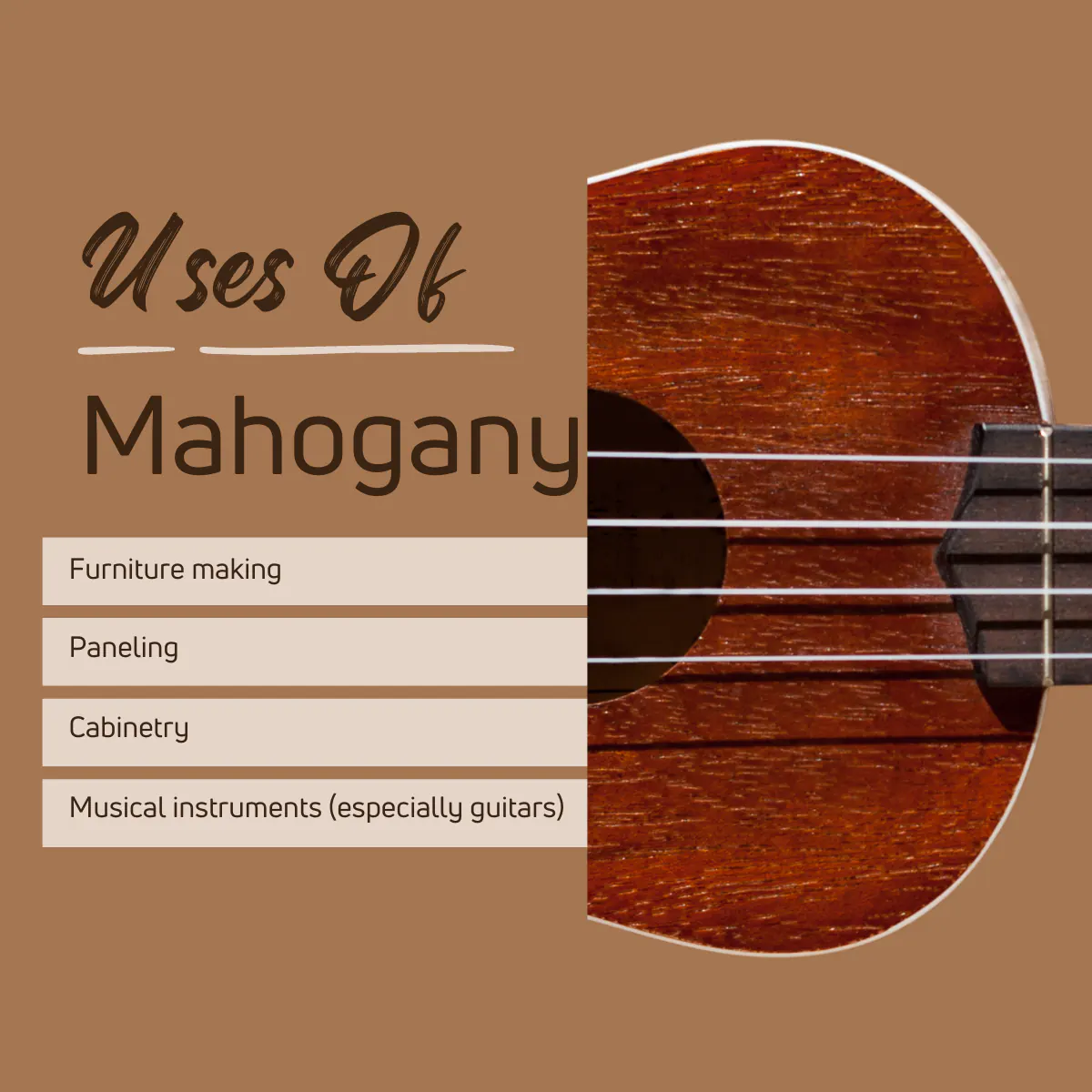
So, let’s talk about the advantages and disadvantages of Mahogany wood in terms of its hardness.
Pros and Cons of Mahogany
| Pros | Cons |
| High workability | Darken over time |
| Dense and hard | Expensive |
| Water-resistant | Heavy |
| Rot-resistant | |
| Less shrinking and warping | |
| Easy to finish | |
| Attractive | |
| High durability | |
| Easy to nail and screw |
As you can see Mahogany is a great hardwood with lots of benefits.
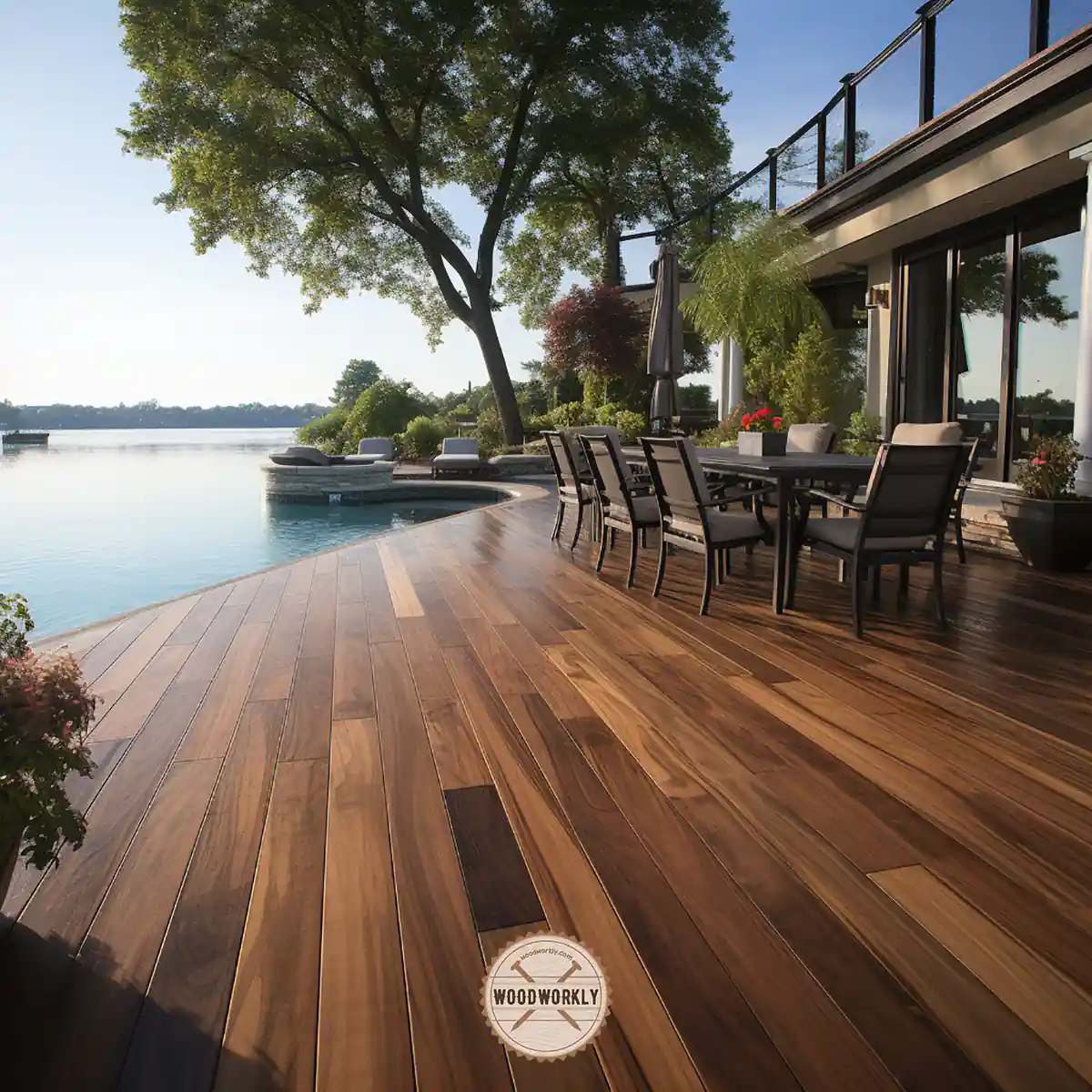
What Is Mahogany Used For?
Because of being a quality hardwood, Mahogany can use literally for any project.
Here’re some popular uses of Mahogany,
- Furniture making
- Wood joints
- Flooring
- Musical instruments
- Patio Furniture
- Cabinets
- Paneling
- Frames
- Boxes and crates
- Cutting boards
- Molding
- Plywood
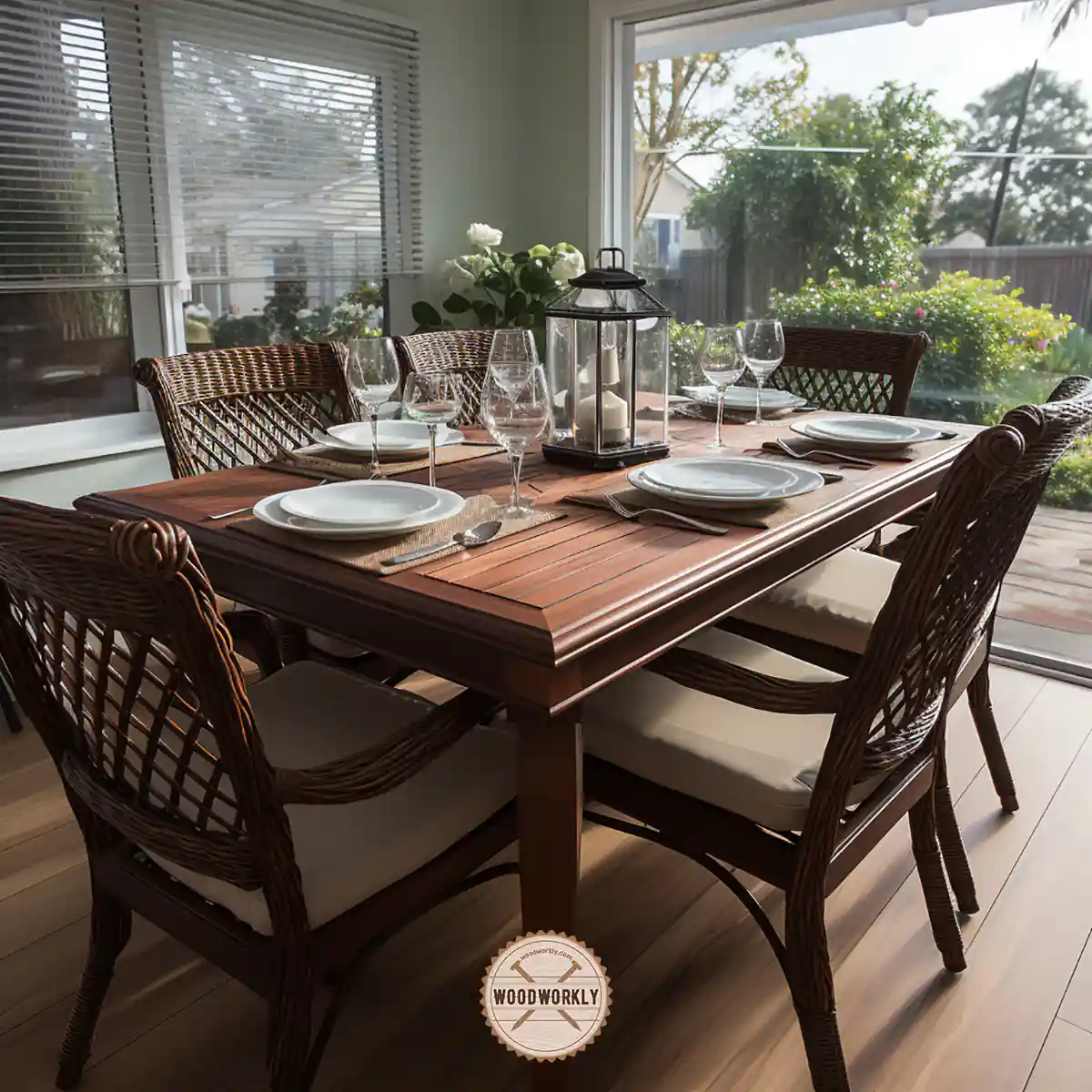
How Strong Is Mahogany?
Mahogany is a hardwood with excellent strength than many other hardwoods and softwoods.
It has high compressive and bending strength and bending strength which is so helpful in large construction woodworking projects.
Here’re the compressive strength and bending strengths of Mahogany,
- The compressive strength of Mahogany is 6,780 lbf
- The bending strength of Mahogany is 11,500 lbf
Great compressive strength and flexural strength are the key factors of Mahogany, that make it popular in the woodworking world.
As per experts, Mahogany is stronger than Chestnut, Alder, Elm, Poplar, and White Cedar.

Tips For Working With Mahogany Hardwood
The mere mention of this exotic wood brings to mind images of sophisticated furniture and intricate carvings.
But, as with many things in life, beauty sometimes comes with its set of challenges.
Whether you’re a seasoned craftsman or just diving into the world of woodworking, getting acquainted with mahogany can be both a joy and a journey.
So, buckle up, my fellow wood enthusiasts, as we navigate through the world of mahogany and share some handy tips to make your crafting experience smoother!
Understanding Mahogany’s Nature
Before we dive into the tips, let’s set the stage.
Remember that time you tried a new recipe and didn’t quite get the texture right because you didn’t understand the ingredients?
Similarly, understanding mahogany’s character is the key to mastering your work with it.
- Color Evolution: Mahogany starts with a light brown or pinkish hue, maturing to a richer reddish-brown over time. So if you’re making a piece today and want it to match an existing mahogany piece, remember to account for this color change.
- Grain Structure: The straight, uniform grain of mahogany is one of its most significant selling points. It’s less rebellious and more cooperative, making it easier to carve and shape.
Tools and Techniques
Sharpness is Key
Always ensure your tools are sharp when working with mahogany. Dull tools can cause tear-outs or uneven cuts.
I once tried to wing it with a not-so-sharp chisel and, let’s just say, the results were less than stellar.
Sanding Insights
Mahogany sands beautifully, but there’s a trick to it. Start with a coarse-grit sandpaper and progressively move to a finer grit for that smooth, velvety finish.
During my early days of working with wood, I was once in a hurry and jumped straight to the finer grit.
The surface looked alright initially but didn’t have the deep, refined finish I was aiming for.
Joinery and Finishing
Gluing Magic
Mahogany adheres well with most wood glues.
Ensure the surfaces are clean and dry, and you’ll have a bond as strong as the tales of old mahogany trees!
Finish with Finesse
Oils and varnishes are mahogany’s best friends. They enhance its rich color and offer protection.
I remember finishing a mahogany coffee table with a touch of linseed oil—it made the wood’s character pop and turned the table into a conversation starter!
Respect the Wood
Given the environmental concerns surrounding mahogany, always ensure you’re working with responsibly sourced wood.
It’s not just about crafting a beautiful piece; it’s about respecting the journey of the wood, the forests it came from, and the hands that made it available to us.
Every piece of mahogany has a story – let’s ensure it’s a good one.
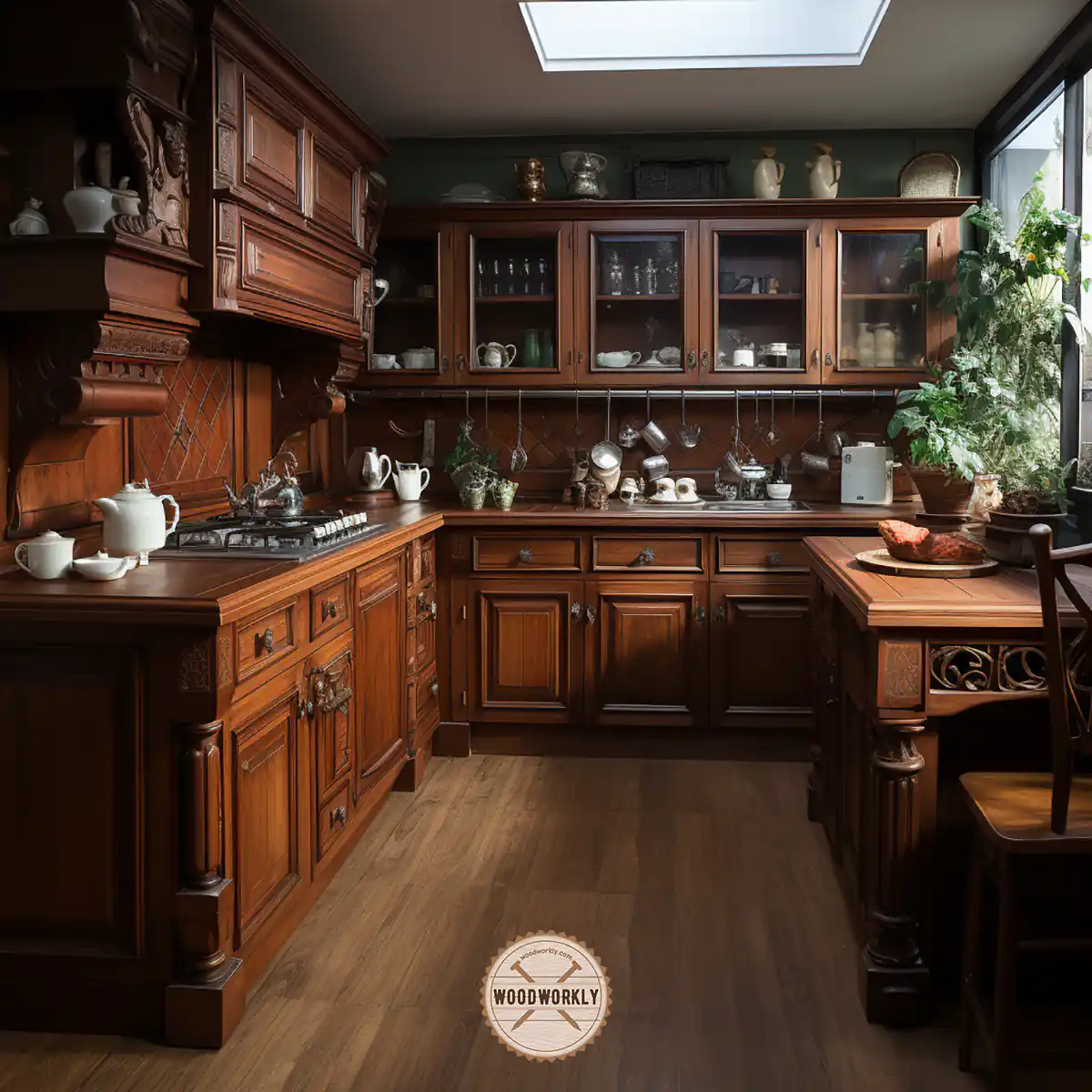
So, let’s compare the hardness of Mahogany with some other popular woods.
Is Mahogany Wood Good Quality?
Yes, Mahogany is a quality wood that can produce furniture with excellent protection from environmental elements like moisture and rotting with a beautiful, nice appeal.
Mahogany wood has a luxurious rich dark color that adds uniqueness to the furniture and other woodwork.
Because of being a quality hardwood, Mahogany is expensive and hard to replace with other wood.
Which Is Harder Oak or Mahogany?
Oak is significantly harder than Mahogany. Even though both oak and Mahogany belong to the hardwood family, both red oak and white oak are extremely hard and dense.
But on the other hand, working with Oak is harder than working with Mahogany.
According to the Janka hardness values, Oak and Mahogany wood hardness is as follows,
| Wood Type | Hardness |
| Mahogany | 800 lbf |
| Red Oak | 1,290 lbf |
| White Oak | 1,360 lbf |
Does Mahogany Scratch Easily?
Mahogany does not scratch easily since it is hardwood with lots of dense. Mahogany is scratch resistant, and it can bare foot traffic and dog scratches so well.
This is why Mahogany is an excellent choice for flooring.
But when we use Mahogany over time, it may lose its strength, and scratches may be visible.
Therefore, applying a good finisher over any Mahogany furniture is good for its durability.
Mahogany takes finishes so well and by applying stain, varnish, polyurethane, paint, or any other finisher, you’ll be able to increase its scratch resistance and improve its lifetime.
Is Mahogany a Cheap Wood?
Mahogany is not a cheap wood. Mahogany is one of the most expensive wood times in the woodworking world.
Mahogany has some exceptional qualities like being hard, dese, water resistant, and attractive which makes it so expensive.
Plus, Mahogany wood is becoming hard to find due to excessive usage. That’s also a considerable factor in its expansiveness.
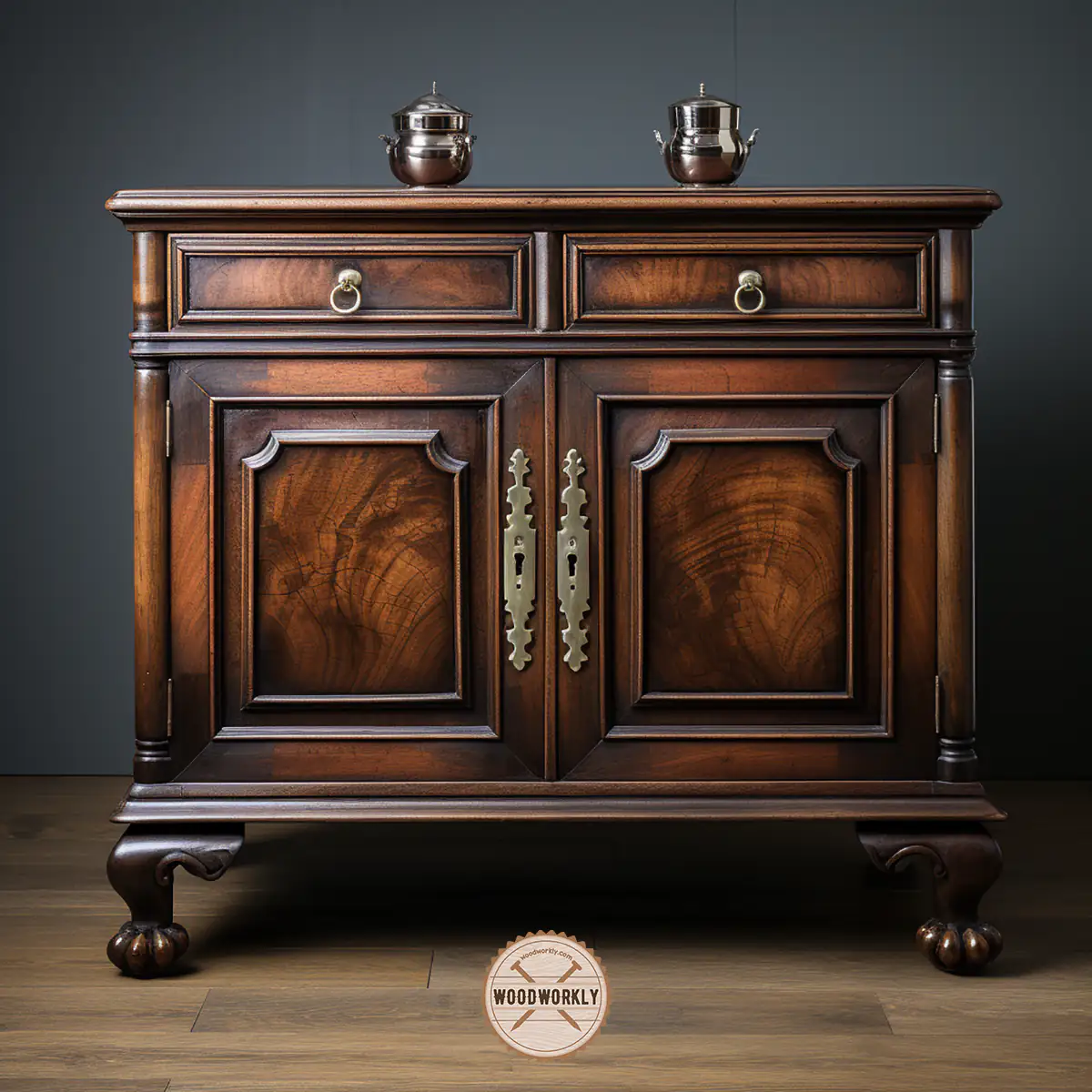
Is Mahogany Harder Than Maple?
Maple is harder than Mahogany. Hard Maple is significantly harder but Soft Maple is slightly harder than Maple.
According to the Janka hardness ratings, the hardness of Maple and Mahogany is as follows,
| Wood Type | Hardness |
| Mahogany | 800 lbf |
| Hard Maple | 1,450 lbf |
| Soft Maple | 950 lbf |
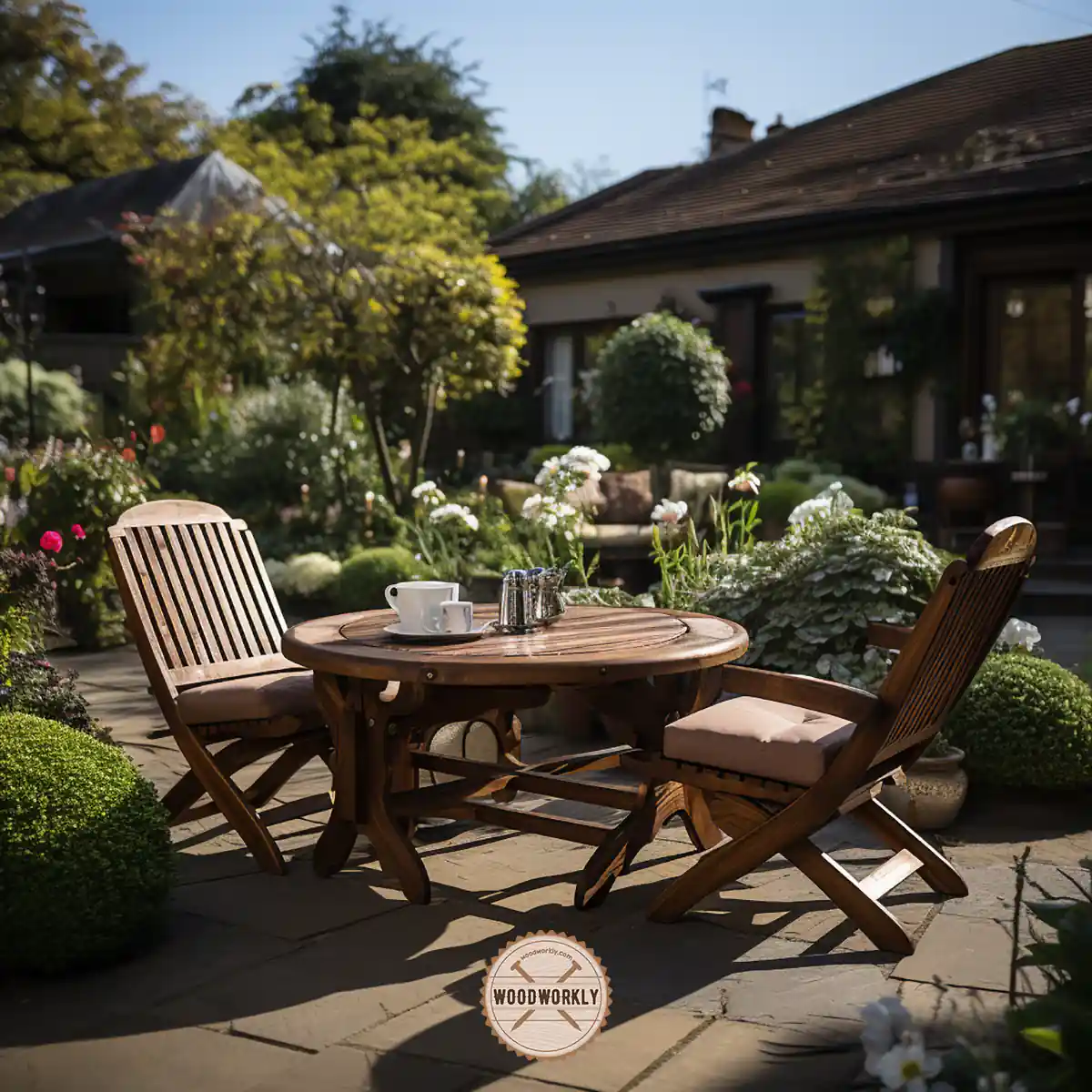
So, let’s answer some frequently asked questions.
FAQs
Is mahogany classified as a hardwood or softwood?
Yes, mahogany is classified as a hardwood, primarily sourced from leafy, dicot trees such as the big-leaf mahogany tree, distinguishing it from coniferous softwoods.
Why is mahogany so sought after in woodworking?
Mahogany’s appeal lies in its beautiful color, straight grain, and easy workability, making it a favorite for furniture, paneling, and intricate carvings.
Are there environmental concerns with mahogany?
Yes, due to overharvesting and illegal logging, particularly in the Amazon, some species of mahogany are on the brink of extinction, raising significant environmental and ethical concerns.
What are some alternatives to mahogany?
Cherry and walnut wood are similar in appearance and grain to mahogany, offering domestic growth and a lower ecological footprint, making them eco-friendlier alternatives.
Is all mahogany genuine mahogany?
No, genuine mahogany comes specifically from the genus Swietenia. Many woods are marketed as mahogany, but true mahogany belongs to this particular genus.
How can I ensure I’m purchasing eco-friendly mahogany?
Opt for mahogany certified by organizations like the Forest Stewardship Council (FSC) and always inquire about its sourcing to ensure it’s responsibly harvested.
Why is mahogany used in musical instruments?
Mahogany’s tonal quality and durability make it a preferred choice for instruments, particularly guitars, producing a warm and resonant sound.
Did I cover all you wanted to know about: Is Mahogany A Hardwood?
In this article, I have deeply discussed Is Mahogany a hardwood and how hard it is by taking its characteristic features with pros and cons.
Mahogany is classified as a hardwood. It originates primarily from leafy dicot trees in tropical regions of Central and South America. Known for its reddish-brown color and straight grain, mahogany is favored for its durability and workability in various woodcrafts.
Mahogany is a hardwood with a Janka hardness rating of 800 lbf which is harder than most of the softwoods and some of the hardwoods as well.
Furthermore, I’ve answered some frequently asked questions as well.
Hope you have gained good knowledge about the hot topic is Mahogany a hardwood with facts.
Try Mahogany wood for your next woodworking project and see how hard and useful it is.
Happy woodworking!